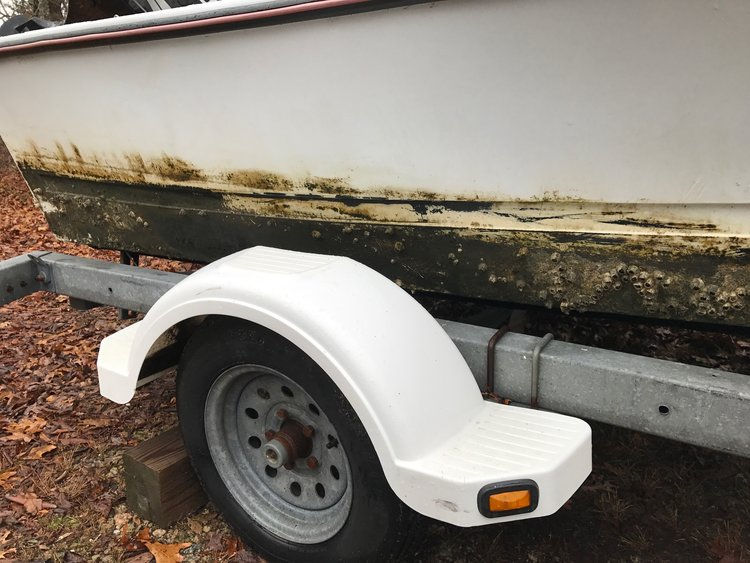By Captain Bill Jennings
There are several reasons why we should always keep our bottoms clean, and looking good is just one of them. I am sure you have noticed that any boat that sits idle in water, for anything but the shortest of time periods, gathers a film coating. This coating can stain your hull very quickly, and act as a feeding ground for other organisms. The accumulation of micro-organisms, plants and algae is called biofouling. Biofouling is divided into two categories:
1- Soft microfilm bacterial adhesion called microfouling. You might say it resembles a slippery, scummy, slimy growth.
2- Partially hard and larger organism growth is called macrofouling. It can appear like a green beard, with lumps.
Growth of any sort on the hull of your boat will increase friction, which in turn increases drag. Even small amounts of growth can decrease speeds by 10% and can require up to a 40% increase in fuel to compensate. If that is not bad enough, the glues that marine organisms use to attach themselves to your boat will cause permanent damage to both wood and fiberglass. You don't have to be a growth guru to recognize that a dirty bottom can be a bummer.
Of course the easiest way to keep your boat clean is to keep it on a lift or trailer. If you keep your boat in the water, but it doesn't seem to stain, simply use a long-handled soft brush regularly to remove any biofouling. Then every month use a soft sponge to apply by hand a strong cleaner, such as Star Brite Boat Cleaner. Wipe from just above the waterline down to the chine on the hull. This can be done at your dock. If you get in the water to clean, try a suction handle to keep you in one spot while you wipe.
On an annual basis or any time your boat collects microfouling, lift it and follow these steps:
First, pressure wash the whole hull. Then spray any biofouling with Clorox, or a chemical lime cleanser such as Star Brite's Hull Cleaner. Wearing cotton gloves, wash and wipe while using a soft white sponge. (Sponges red in color could be too course for your gelcoat or paint and black sponges are designed for BBQ's). With good cleaners, the proper technique, and then a little wax, you will be amazed how your boat will come back to its original shine.
While I am personally not a fan of anti-fouling bottom paint for ecological reasons, there are several that do a good job on large boats. EP200 utilizes sunlight to generate hydrogen peroxide around the hull discouraging growth. Intersleek 700 and 900 are silicone and Teflon coatings that make it difficult for organisms to attach themselves to your boat and easier to brush off.
In addition to the hull, be sure to clean shafts, legs, and propellers. Then check and clean all though hulls of any blockages or growth.
Whichever method you decide to use, the bottom line is -- keep your bottom clean. So, before you pop your boat back in the water this spring, try these steps to give it a good scrub.














Comments